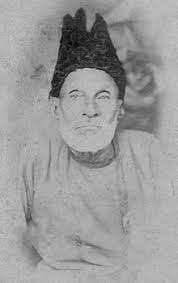Lower Circular Road Cemetery
Known as General Episcopal Cemetery, the Lower Circular Road Cemetery is located on the crossing of Mother Teresa Sarani and Acharya Jagadish Chandra Bose Road (former Lower Circular Road). It was established on 1840 and is still functional. It contains approximately 12,000 graves including many former British East India Company employees. There are two Second World War Commonwealth war graves, of an officer of the British Indian Army and a purser of the British Overseas Airways Corporation.
 |
| Entrance to the burial ground |
Notable graves
Herbert Alick Stark (1938) - Author and educationist
William Hay Macnaghten (1841) -
First Baronet and a British civil servant in India, who played a major part in
the First Anglo-Afghan War.
David Drummond (1843) -
was then appointed as an assistant in the proprietary school of Messer’s
Wallace and Measures. A few years after he became sole proprietor the
Dhurmotolla Academy under him speedily attained the highest position amongst
the educational establishments of Kolkata, and aided high class English
education among the European Children, as well as to Eurasians and natives. Henry
Louis Vivian Derozio was given formal education at this school of David Drummond.
John Elliot Drinkwater Bethune (1851) - was
an English educator, mathematician and polyglot known for promoting women's
education in India. He was the founder of Calcutta Female School (now known as
Bethune School). Bethune College is considered the oldest women's college in
Asia. He started his professional life as a lawyer in England and came to India
by his appointment as a law member of the Governor General's Council of
Ministers.
 |
| Entrance to the area bearing Bethune;s Grave |

Michael Madhusudan Dutt (1873) - A Bengali
poet and playwright. He is considered one of the pioneers of Bengali
literature. His wife is laid beside him.
Heinrich Blochmann (1878) - was a German
orientalist and scholar of Persian language and literature who spent most of
his career in India, where he worked as a professor and as the principal at
Calcutta Madrasa, now Aliah University. He is one of the first major English
translators of Ain-i-Akbari, the 16th-century Persian language chronicle of
Mughal emperor Akbar, published in 1873.
Henri Hover Locke (1885) - joined as its
principal. It was soon renamed as the Government School of Art. Locke made a
comprehensive scheme of Curriculum of studies for the institution. The venue of
the school was shifted to 166, Bowbazar Street in the 1880s.
Jules Henri Jean Schaumburg (1886) - appointed as an artist to The
Geological Survey of India.
Charles Freer Andrews (1940) -
An Anglican priest and Christian missionary, educator, social reformer and an activist
for Indian independence. He was a close associate of Rabindranath Tagore and
Mahatma Gandhi and identified with the Indian liberation struggle.
Leslie Claudius (2012) – Indian field hockey player, being one of the only two Indian players to win four Olympic medals.
Neil O'Brien (2016) - Former Member of the West Bengal Legislative Assembly also credited for conducting the first formal well-organized quiz.
The burial ground is well maintained and has a war memorial. The employees escort stray Europeans to the plot to find their ancestors’ grave. An alphabetical register exists.




























Comments
Post a Comment